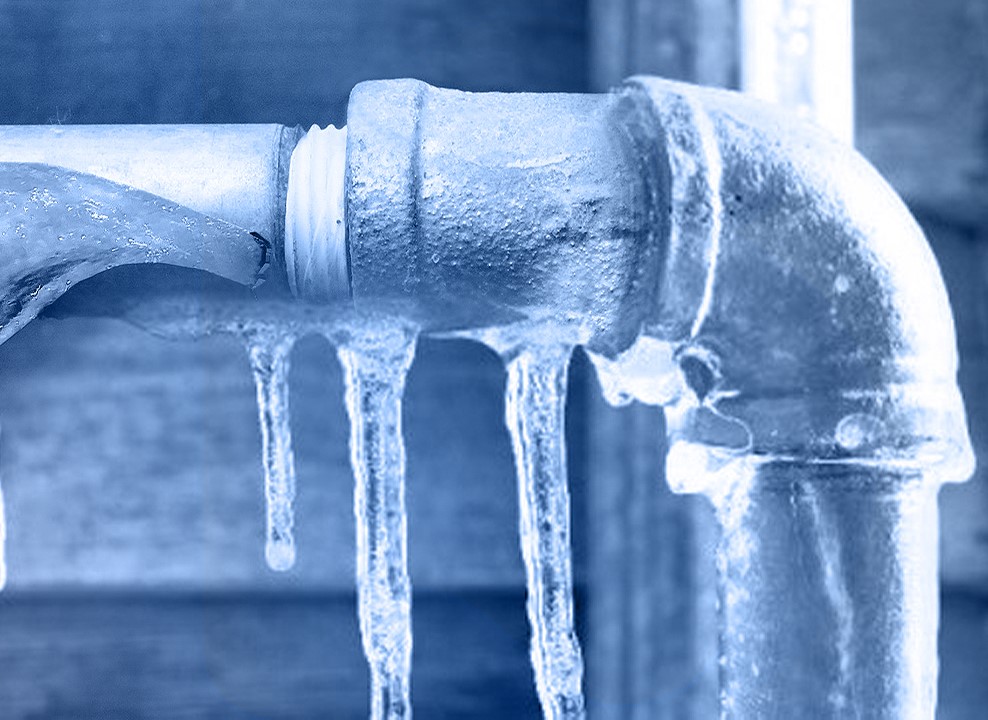Ways to Defend Your Plumbing from Freezing: Essential Tips
Ways to Defend Your Plumbing from Freezing: Essential Tips
Blog Article
Just how do you actually feel when it comes to Preventing and dealing with frozen pipes?

Cold weather can ruin your pipes, specifically by freezing pipelines. Right here's exactly how to stop it from occurring and what to do if it does.
Intro
As temperatures decrease, the danger of frozen pipelines boosts, possibly causing costly repair services and water damages. Comprehending exactly how to stop frozen pipelines is essential for homeowners in cool environments.
Avoidance Tips
Shielding susceptible pipelines
Wrap pipes in insulation sleeves or use warmth tape to protect them from freezing temperatures. Focus on pipelines in unheated or exterior areas of the home.
Home heating strategies
Maintain indoor rooms properly heated, particularly areas with pipes. Open cabinet doors to permit cozy air to flow around pipelines under sinks.
Just how to recognize frozen pipelines
Look for decreased water circulation from taps, unusual odors or noises from pipelines, and visible frost on subjected pipelines.
Long-Term Solutions
Architectural modifications
Consider rerouting pipes far from exterior wall surfaces or unheated areas. Include additional insulation to attics, cellars, and crawl spaces.
Updating insulation
Buy top quality insulation for pipes, attic rooms, and wall surfaces. Appropriate insulation helps maintain constant temperature levels and minimizes the threat of icy pipelines.
Protecting Outside Plumbing
Yard hoses and outside taps
Disconnect and drain pipes yard hose pipes prior to wintertime. Mount frost-proof spigots or cover exterior taps with shielded caps.
Recognizing Frozen Pipes
What triggers pipes to ice up?
Pipes ice up when exposed to temperatures listed below 32 ° F (0 ° C) for expanded periods. As water inside the pipes freezes, it broadens, putting pressure on the pipe wall surfaces and possibly creating them to rupture.
Threats and damages
Icy pipes can bring about water disruptions, property damages, and pricey repair work. Burst pipes can flooding homes and create considerable architectural damage.
Signs of Frozen Pipeline
Determining icy pipelines early can prevent them from bursting.
What to Do If Your Pipes Freeze
Immediate activities to take
If you believe frozen pipelines, maintain faucets available to alleviate stress as the ice thaws. Make use of a hairdryer or towels taken in warm water to thaw pipelines gradually.
Verdict
Protecting against icy pipelines calls for aggressive measures and quick reactions. By understanding the reasons, indications, and preventive measures, homeowners can shield their pipes during cold weather.
Helpful Tips to Prevent Frozen Pipes this Winter
UNDERSTANDING THE BASICS: WHY PIPES FREEZE AND WHY IT’S A PROBLEM
Water freezing inside pipes is common during the winter months, but understanding why pipes freeze, and the potential problems it can cause is crucial in preventing such incidents. This section will delve into the basics of why pipes freeze and the associated problems that may arise.
THE SCIENCE BEHIND FROZEN PIPES
When water reaches freezing temperatures, it undergoes a physical transformation and solidifies into ice. This expansion of water as it freezes is the primary reason pipes can burst. As the water inside the pipe freezes, it expands, creating immense pressure on the walls. If the pressure becomes too great, the pipe can crack or rupture, leading to leaks and water damage.
FACTORS THAT CONTRIBUTE TO PIPE FREEZING
Low Temperatures: Extremely cold weather, especially below freezing, increases the risk of pipes freezing. Uninsulated or Poorly Insulated Pipes: Pipes located in unheated areas, such as basements, crawl spaces, or attics, are more prone to freezing. Insufficient insulation or lack of insulation altogether exacerbates the problem. Exterior Wall Exposure: Pipes running along exterior walls are susceptible to freezing as they encounter colder temperatures outside. Lack of Heating or Temperature Regulation: Inadequate heating or inconsistent temperature control in your home can contribute to frozen pipes. PROBLEMS CAUSED BY FROZEN PIPES
- Pipe Bursting: As mentioned earlier, the expansion of water as it freezes can cause pipes to burst, resulting in significant water damage.
- Water Damage: When pipes burst, it can lead to flooding and water damage to your property, including walls, ceilings, flooring, and personal belongings.
- Structural Damage: Prolonged exposure to water from burst pipes can compromise the structural integrity of your home, leading to costly repairs.
- Mold and Mildew Growth: Excess moisture from water damage can create a favorable environment for mold and mildew growth, posing health risks to occupants.
- Disrupted Water Supply: Frozen pipes can also result in a complete or partial loss of water supply until the issue is resolved.
WHY CERTAIN PIPES ARE MORE PRONE TO FREEZING
- Location: Pipes located in unheated or poorly insulated areas, such as basements, crawl spaces, attics, or exterior walls, are at higher risk of freezing.
- Exterior Pipes: Outdoor pipes, such as those used for irrigation or exposed plumbing, are particularly vulnerable to freezing as they are directly exposed to the elements.
- Supply Lines: Pipes that carry water from the main water supply into your home, including the main water line, are critical to protect as freezing in these lines can affect your entire plumbing system.
- Underground Pipes: Pipes buried underground, such as those connected to sprinkler systems or outdoor faucets, can be susceptible to freezing if not properly insulated.
https://busybusy.com/blog/helpful-tips-to-prevent-frozen-pipes-this-winter/

I have been very serious about Prevent Frozen Pipes and I am assuming you enjoyed reading the new post. Sharing is caring. Helping others is fun. I treasure reading our article about Helpful Tips to Prevent Frozen Pipes this Winter.
Call Today Report this page